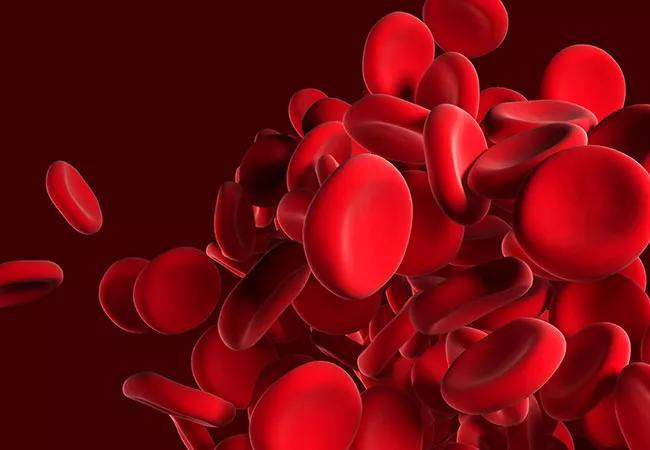Interim results of phase 2 trial are promising

The first-in-class erythroid maturation agent luspatercept shows significant clinical activity in patients with myelofibrosis-associated anemia, according to the interim results of a phase 2 study presented at the American Society of Hematology’s 2019 annual meeting. Anemia impacts about two-thirds of patients with primary or post-essential thrombocythemia/polycythemia vera myelofibrosis.
Advertisement
Cleveland Clinic is a non-profit academic medical center. Advertising on our site helps support our mission. We do not endorse non-Cleveland Clinic products or services. Policy
“Many of these patients’ anemia progresses to the point of requiring transfusions, which have many downstream effects such as transfusion reactions, development of allo-antibodies or iron overload. This is not to mention the reduction in quality of life that is associated with transfusion dependence,” says the study’s lead author, Aaron T. Gerds, MD, of Cleveland Clinic Cancer Center’s Department of Hematology and Medical Oncology. “It’s a widespread issue for these patients, and in the past, treatment options have been severely limited at best. We are working to change this.”
Luspatercept is the first drug of its kind. As an erythroid maturation agent, this recombinant fusion protein binds to specific transforming growth factor beta (TGF-β) superfamily ligands, which diminishes Smad2/3 signaling and enhances late-stage erythropoiesis. The drug was recently approved for treatment of anemia in transfusion-dependent patients with beta thalassemia. Other trials are underway exploring its use in patients with nontransfusion-dependent beta thalassemia and have been completed in myelodysplastic syndromes.
“We’ve known that the TGF-β signaling pathway plays a key role in the pathogenesis and clinical manifestations of myelofibrosis for some time,” says Dr. Gerds, “and now we are setting our sights on targeting it.”
Researchers enrolled 74 patients with myelofibrosis and anemia in this open-label trial. The median age was 71 years, and 57% of patients were male. They divided patients into four cohorts:
Advertisement
Patients in all cohorts received luspatercept every 3 weeks, starting at 1.0 mg/kg and increasing up to 1.75 mg/kg, at a median of eight cycles. The cohorts not on transfusions had mean hemoglobin concentrations of 8.8 g/dL (Cohort 1) and 5.6 g/dL (Cohort 3A) when they entered the study. Cohort 2 received a median of 2.7 RBC units every 4 weeks, while patients in Cohort 3B received slightly less, at a median of 2.3 RBC units per four weeks.
Researchers were looking for an increase of 1.5 g/L or more in hemoglobin for 12 or more consecutive weeks in patients not receiving transfusions. The primary endpoint for patients receiving RBC transfusions was 12 or more weeks of transfusion independence.
Ten percent of patients in Cohort 1 and 21% of patients in Cohort 3A achieved the primary endpoint of sustained increase in hemoglobin of 1.5 g/L or more. Ten percent of patients in Cohort 2 and 32% in Cohort 3B achieved sustained transfusion independence for median 23 and 32 weeks, respectively. Overall, 5% of patients experienced grade 3-4 treatment-related adverse events, consistent with other studies of the agent.
“We were very encouraged by these results,” says Dr. Gerds, although he notes the study is ongoing, as cohort 3B has been expanded to include more patients. “When the study concludes, we hope to have a much better understanding of luspatercept’s efficacy and safety, both alone and in conjunction with ruxolitinib. Then we can then use this information to inform the design of a randomized phase 3 trial.”
Advertisement
Advertisement

Obstructing key protein allows for increased treatment uptake for taxane chemotherapy

Oral medication reduces epistaxis and improves quality of life for patients with rare vascular disorder

Findings could help with management of a common, dose-limiting side effect

Enfortumab vedotin plus pembrolizumab benefited patients, regardless of biomarker expression

Treatment involved checkpoint inhibitor, surgery and intravesical therapy

Researchers Assess Real-Life Experiences of Patients Treated Outside of Clinical Trials

Multi-specialty coordination essential for improving quality of life